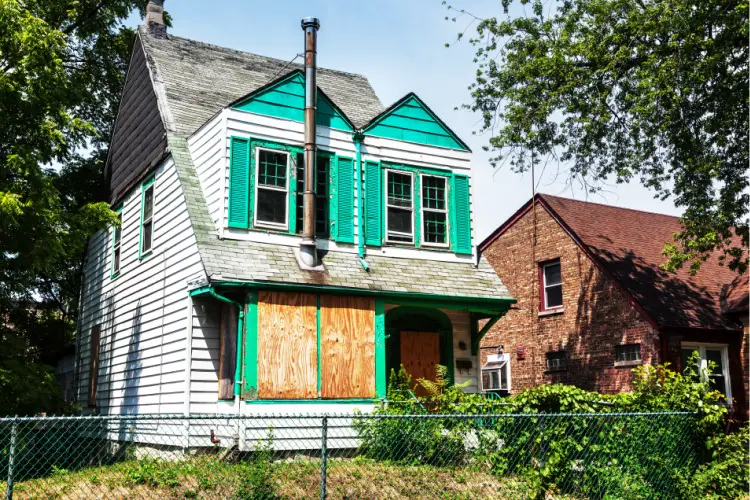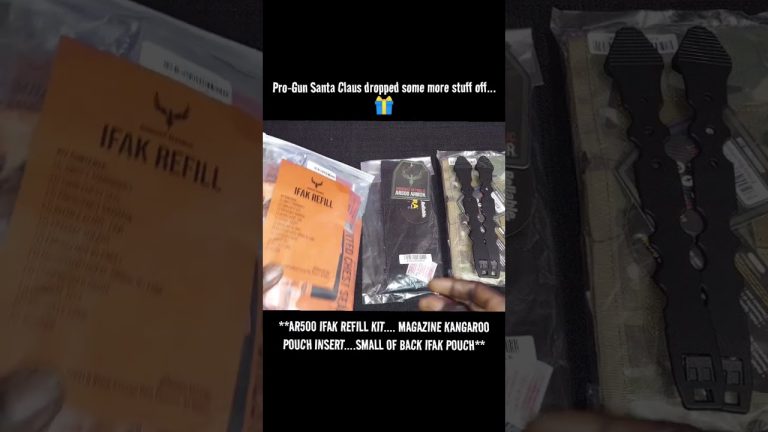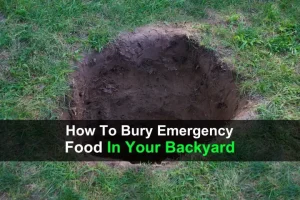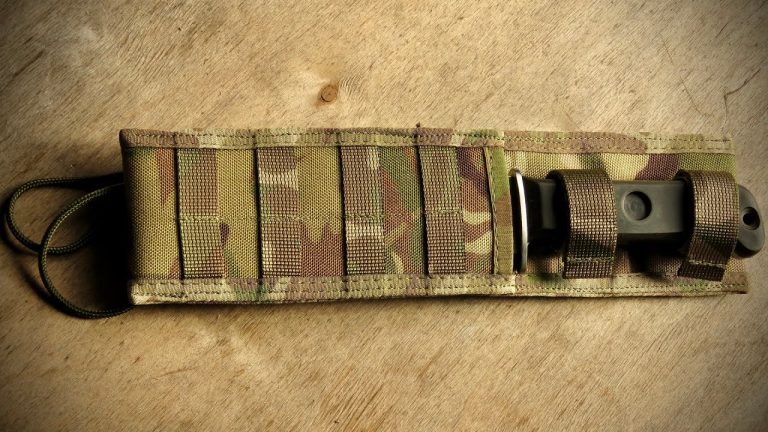(Psst: The FTC wants me to remind you that this website contains affiliate links. That means if you make a purchase from a link you click on, I might receive a small commission. This does not increase the price you’ll pay for that item nor does it decrease the awesomeness of the item. ~ Daisy)
A highly contentious election is taking place this week, and it won’t take much for chaos to erupt. It’s important to remember that political violence is no longer just the domain of big cities. Wherever you live, you may need to get ready fast.
When you live in an urban or suburban location and it looks like all heck is about to break loose, how can you prepare your place fast for the potential of unrest? As we’ve seen in cities across the country, a peaceful protest can turn into a violent riot in the blink of an eye. How do you prepare when the spark is lit in your hometown?
While our first recommendation on this website is always “don’t be there” we know there are some situations in which leaving isn’t an option.
Therefore, this article is based on the premise that, for whatever reason, you’re going to need to hunker down in your home. The reason you’re there doesn’t matter – the concept is simply that you’re there. With only a couple of exceptions, we’re also going to use things you can commonly find in homes with no special trips to the store.
For a detailed overview of civil unrest and riots, check out Selco’s on-demand webinar on the topic.
Timing is essential
The first thing to consider is that speed is of the essence. If there’s something going on in your hometown that could cause unrest, like a highly contested election or the announcement of a verdict or sentencing, you will probably know about it at least a day ahead of time. This allows you a bit more leeway in gathering supplies.
But we don’t always get that warning. Sometimes the response of outrage is immediate, as we’ve seen in the cases of several police shootings recently. In these cases, sometimes the outrage is warranted, and other times it’s not, but that part doesn’t matter when there are people who want to destroy, loot, and burn.
It’s best if you have an idea of how you’re going to prepare ahead of time. If you know this, then you can have on hand the supplies that you need. If not, you’ll be using what you have on hand.
As soon as you feel that unrest is a possibility, it’s time to take action if you plan to stay in place. Don’t just “wait and see.” Assume that bad things are coming your way and act accordingly.
Blend in
We’ve talked a lot about the gray man principle in the preparedness world. You can learn more about it in this article. In situations of unrest, it’s helpful if your home is also “gray.” But it’s important to understand that gray isn’t always just non-descript or non-memorable. It can mean you are adapting to the baseline of your area. And sometimes that means adapting to it whether you agree with it or not.
How do you do that? Well, it depends where you are and who the potential threat is.
Many of the recent riots in the United States have been related to race and police brutality. These two things give you some hints on what you might want at your home and also what you might not want.
An important thing to note: I’m well aware this advice will not be popular in our circles, but remember that we’re talking about survival. Not about right vs. wrong, free speech, or your love of the United States of America. You have to be the one to make the decision whether you place precedence on the lives of your family or on your patriotism and principles. Sometimes, like matter, the two cannot occupy the same space at the same time. I can’t tell you what is right or what is wrong. I can simply point out things that could make your home a target.
First, consider the things you may want to remove temporarily.
It’s a sickening fact that homes flying American flags have been targeted by arsonists. It’s practically unbelievable that this is happening in the United States, but it is. Due to this, you may want to remove anything that is obviously patriotic from the exterior of your home.
If you’ve got a “Thin Blue Line” sticker on your car, you’ll want to park it in the garage. In these harrowing times, obvious support of law enforcement is a sure way to capture the ire of a mob that wants to see the police eradicated. The same thing goes for flags and exterior decorations that show support of LEOs. In Minneapolis, it was discovered that police officers were being followed home and their families and properties were targeted.
Depending on the situation in your area, you may want to add some things to make your home a less desirable target. A small sign in the window that says something like “Racial Equality” may indicate the residents are sympathetic to the cause of those rioting and could be enough to deter them from smashing your windows and setting your home on fire. I’m not suggesting you have to go full-on BLM with your signage. But consider something small and relatively innocuous to use as a type of “camouflage.” I don’t see this as very different from the quarantine tape I have stashed away to make my home look undesirable in the midst of a pandemic.
Unless others in the neighborhood are boarding up their windows, you may not want to batten down the hatches with plywood on the exterior. Keep reading for more information on boarding up your windows.
Aside from these things, be sure to remove anything from the front of the house that could be used to break the windows, like planters and lawn furniture. Secure your belongings like bicycles and toys indoors or you may discover they’ve been taken by self-entitled rioters.
Finally, if you are home during the riots, gather in one room. This way you know where everybody is if things get crazy and you know that everyone is practicing proper light control. Keep the lights off – some rioters really want a confrontation, so they’ll be looking for homes that look occupied. Keep your blinds or curtains closed and make sure any light you use is dim and not very noticeable. Before an event occurs, test things out. Can you still see the television in the family room from the outside when the curtains are closed? How bright is that nightlight in the bathroom? Can you identify people walking around inside through the blinds? Make the appropriate adjustments before any violence erupts.
Be harder to get to
The next thing to do is to harden your home. You don’t want to be an easy target. When discussing this, a lot of folks immediately think “booby traps.” I’m not recommending anything like that. We’re not in a Mad Max situation right now, even though it could feel like it in the moment. Booby traps are illegal and you will be held both criminally and civilly liable for any injury or death that occurs from a trap you set.
As per the Geneva Convention:
Without prejudice to the rules of international law applicable in armed conflict relating to treachery and perfidy, it is prohibited in all circumstances to use:
a. any booby-trap in the form of an apparently harmless portable object which is specifically designed and constructed to contain explosive material and to detonate when it is disturbed or approached, or
b. booby-traps which are in any way attached to or associated with:
1. internationally recognized protective emblems, signs or signals;
2. sick, wounded or dead persons;
3. burial or cremation sites or graves;
4. medical facilities, medical equipment, medical supplies or medical transportation;
5. children’s toys or other portable objects or products specially designed for the feeding, health, hygiene, clothing or education of children;
6. food or drink;
7. kitchen utensils or appliances except in military establishments, military locations or military supply depots;
8. objects clearly of a religious nature;
9. historic monuments, works of art or places or worship which constitute the cultural or spiritual heritage of peoples;
10. animals or their carcasses.
It is prohibited in all circumstances to use any booby-trap which is designed to cause superfluous injury or necessary suffering.” (source)
Explosives, sharpened items, devices that cause guns to fire, and devices that produce toxic fumes upon contact are all prohibited.
While some folks may be bitterly disappointed that they can’t spear their adversaries with a custom-made booby trap, you can still protect your home
This happens in layers.
Securing the outside
Think like a criminal when looking at your home.
First things first, anything outside that keeps people further away from the home itself is good. Lots of folks have fences around the front but leave their gates unsecured. If there is any inkling your neighborhood could be a target of unrest, lock your gate! Do this with a padlock or with a bar secured across the inside of the gate.
In nearly every situation, I’d advise you not to leave pets outside to “guard” the home. Pets can be seriously injured or killed. They can also be used like a hostage by unsavory people to lure the homeowners out. Keep your pets inside during times of unrest.
As mentioned above, remove anything from the exterior that could be used to gain access by breaking a window.
Many people board up all their windows with plywood. If you plan to do this, get the plywood well ahead of time and pre-drill the holes so you can install it quickly. You can store plywood between your mattress and box springs, or under your bed. I’ll go into this more in a moment but do not cover every single window of your home with plywood. You don’t want to create a prison from which you have no escape. Generally, just cover the front windows and sidelights by your doors.
Make sure alternative entrances are protected with warning devices. I hang windchimes on windows and decorative bells on doorknobs. Even when I travel, I carry a little windchime to hang on the doorknob of my Airbnb or hotel room to alert me to potential trouble. When my daughter and I faced the potential of unrest in Virginia, I set up a tripwire at the back gate that fired 22 caliber blanks when triggered. Notice – I said blanks. As I mentioned above, you don’t want to set up anything that might hurt someone. 22 caliber isn’t overly loud but it’s enough to alert you that something is going on, and may even scare away less hardy intruders.
Deterring entry
If your home is breached, all is not lost. Your next goal is to make it difficult to get to you. We’ve already discussed that your lights should be turned off. This gives you the advantage of knowing the layout while those who broke in have no idea what they’re walking into.
But darkness isn’t your only advantage. When I was staying with my daughter in her downtown apartment during the COVID lockdowns, we realized that our front hallway was a true weak spot. The front door was solid glass and there were also glass sidelights. The door frame of the old building wasn’t of the highest quality and I could easily see the door being breached, either by the glass being broken or by a strong person simply breaking through due to the weak frame. As renters this is not something we could replace. So, we got plywood cut to fit and I added spacers that allowed the blinds to be between the plywood and the glass, making it look less obvious that we had boarded things up.
However, this didn’t do anything to prevent someone from breaking down the door, so our next step was to make the hallway harder to navigate. I came across this solution accidentally. We had come home late one day and dropped our purchases on the floor right inside the door, along with a purse and a backpack. I got up in the middle of the night to use the bathroom and fell facefirst over a giant box of industrial trashbags. When I tried to catch myself, my foot got tangled in the long strap of my daughter’s purse. This, of course, was all gracefully executed. But as I sat there on the floor with my knee throbbing, I thought, hey, they call these things “stumbling blocks” for a reason.
The next day, I created my own stumbling blocks. I took some of our carry-on luggage and weighted them down with hard cover books. I lined these suitcases along the side of the hallway most of the time, but when unrest was nearby, I could easily roll them where I wanted and lay them down at different angles to make the hallway a bit more difficult to traverse. At the very least, these things will make some racket and slow people down before they get to your refuge.
Setting up a safe zone
And that leads us to the safe zone. You may not have time to create an entire safe room, but you can at least designate one room as a safe zone. Make this room the furthest from the most likely point of entry. (For us the most likely entry would have been the front door and the best option for a safe zone was a bedroom in the back part of the house.) The room needs to have a door to the rest of the house and an emergency way to exit.
You want your safe zone to be comfortable enough for the whole family to hang out in – this could mean pulling an extra mattress into a bedroom or rearranging the furniture. Plan to spend the evening together in this room.
Adults should be armed and prepared in the event that their home is breached. If your home is breached your priority is the safety of those under your care. If you have small children or anyone who is unfamiliar with the safe handling of firearms, please keep your gun on your person for safety purposes. In fact, I recommend that you keep your gun on your person at all times during these situations anyway. You’re not going to be able to say to intruders, “Oh, hold on, I forgot my Glock in the master bedroom.” A gun is like a trauma first aid kit. If you need it, you need it instantly, not in in five minutes.
You should have a plan to barricade the door to the safe zone. This could mean relocating a heavy piece of furniture near the entrance where you can quickly push it in front of the door if necessary. Your goal here is to slow down and deter intruders.
While you should definitely call 911 if your home is breached to have it on record that you did call for official help, don’t rely on them to dispatch assistance with sirens blaring. As a woman from Kenosha, Wisconsin recounts of her experience during the riots, “It was apparent from the beginning there was no help. No police, no fire trucks no ambulances. None.” Don’t expect your situation to be any different.
If you have intruders, you may wish to issue a verbal warning letting them know you are armed and will open fire if they continue to try and breach your safe room. For some people that will serve as enough of a deterrent. For others, swept up in the mob mentality, it could serve to enflame them further.
For the love of all things cute and fluffy, remember that you are probably not John Rambo. You might be able to take out a few intruders, but if dozens of people are swarming into your home, you won’t be able to take out all of them. Read this article for more information on escaping an angry mob. You may have family members who will suffer due to your actions, so think things through ahead of time. Don’t just blindly react.
Create a funnel
If, despite your best efforts, people do get into your home, there are things that you can do to manage where they go. Most people in mobs are participating in more of a group mentality – you won’t see a lot of critical thinkers. This means that you can often strategically guide them to the place where you want them.
Where you want them depends upon your goal and this is where the conversation gets tricky. Do you want them to head to the opposite side of the house from where your safe zone is to give yourself more time to escape? Do you want them to be in an area where you can take defensive action from a protected position?
I cannot advise you on a public website to set up some kind of shooting gallery in your home. But consider the following thoughts.
- Think about backstops. In the event that you have no option but to defend yourself, what is behind the intruders after you funnel them into your desired location? Would gunfire go through to the next apartment? Out into the street? Or would it be stopped by a concrete wall?
- Understand the difference between cover and concealment. Television has done us a terrible disservice when it shows someone tipping over a wooden kitchen table and taking “cover” behind it to survive the intruders opening fire with fully automatic weapons. Concealment means you’re hidden. Cover means you’re protected from most gunfire. If you ARE planning to take aggressive defensive action, you’ll want to do it from a place of cover.
- Understand that there will be legal ramifications. Even if you are innocent of all charges, you must prepare yourself for a lengthy and expensive court battle. Any set up you’ve done in advance will likely be used against you in such a battle. If your area is more sympathetic toward rioters than us average folks, you could be in for a barrage of negative publicity and harassment.
Consider all of these things before taking defensive actions. And perhaps reconsider leaving if that remains a possibility it all.
Now, back to our funnel. It’s fairly easy to guide people to where you want them to go. Most people, especially those who are untrained, will take the path that looks most direct and easiest. Figure out all of the options a person in your funnel might have. Options might include open rooms, doors to closed rooms, and exits.
Once you’ve considered what the options are, then make the options you want them to choose EASY and the options you don’t want them to choose CHALLENGING.
Going back to our long front hallway in my daughter’s city apartment, we wanted people in our hall for as long as possible, not scattering to rooms off the hallway. One bedroom near the door had a second door that led to the back part of the house. We definitely didn’t want intruders going that way because we’d end up flanked in our safety zone. I solved this issue by putting a bookcase loaded with books in front of the bedroom door that led to the hallway. Who is going to try and move a giant bookcase when there’s a hallway with 3 open doors ahead of them?
What you’re really doing here is using psychology to manipulate your potential attackers to the place where you want them. This article has a lot of excellent in-depth guidance on preparing your space for such a siege.
Be prepared for fire
One of the most common weapons we’re seeing used in the current spate of riots is fire.
Fires are very common during incidents of civil unrest. Generally, vehicles and commercial properties are where fires are set but in some incidents, homes have been burned too.
Fire is a cowardly attack that doesn’t require any interaction on the part of the arsonist. It flushes out the family inside, leaving you vulnerable to physical assaults. This is the one area in which you may need to make some advance purchases. However, all of these fire-related items are good things to have in your home during ordinary circumstances as well. You probably already have at least one fire extinguisher. If that is all you have, keep it with you in your safe zone.
- Have fire extinguishers mounted throughout your home. You can buy them in 4-packs from Amazon.
- During tense times, keep a fire extinguisher right beside your bed. You can use it as both a way to extinguish fires and a weapon if necessary.
- Be sure to test them frequently and maintain them properly. (Allstate has a page about fire extinguisher maintenance.)
- Have fire escape ladders
that can be attached to a windowsill in all upper story rooms. Drill with them so that your kids know how to use them if necessary. When I travel by vehicle, I have a fire-escape ladder in with my preps. Hotel fires are not uncommon and I want to have options.
Fires can easily spread from one building to the next, especially if firefighters can’t respond safely or can’t get their fire truck through the mob. Be on the watch for fires in your vicinity.
Fire can also be used as a weapon. Here’s an article about dealing with firebombs and Molotov cocktails should such an event arise.
Don’t close off your escape routes
Something I see a lot are plans that keep everybody out and firmly secure every possible point of entry. And I thought that was a fantastic idea until I took an urban survival course with Selco in Croatia and he pointed out that this can also be appropriately considered a “trap.”
If you put bars on every door and window, you’ve created a prison for those inside. What happens if your home is set on fire? What happens if your home is breached? You need some exits. They don’t have to look obvious and can take only minimal preparation.
For example, I told a family member living in a downtown area to remove the screens from her windows. That saves precious seconds and allows for a far more silent exit than if she were to have to remove the screens while rioters were breaching her front door. She can easily slip through the window, close it back so that nobody immediately realizes where she exited, and head out the back with a minimum of noise.
At the same time, her windows are secured with shatter-resistant film and a bar to prevent them from being raised. That bar can be instantly removed from the inside if she needs to make her escape.
Never ever make your home so difficult to breach that you cannot escape. While your plan may be to stand your ground no matter what, being burned alive would be a terrible way to go.
How would you quickly secure your home if tensions broke out nearby?
I’ve generally lived in places where I had a bit more control over my situation, but when unrest broke out in Virginia near the home I shared with my daughter during the lockdown, I had to creatively secure the apartment using things we had on hand. I hope that some of the ideas we’ve used are useful to you.
We all live in different settings and some of us are more likely than others to face the scenarios mentioned in this article. But take a moment and imagine that “peaceful protesters” were bussed into your neighborhood (or were expected.) Do you have a plan? Does your family know the plan? Do you have any ideas to add to the ones above?
Let’s talk about it in the comments.
About Daisy
Daisy Luther is a coffee-swigging, globe-trotting blogger. She writes about current events, preparedness, and the pursuit of liberty on her website, The Organic Prepper. On her new website, The Frugalite, she shares thrifty tips and solutions to help people get a handle on their personal finances. She is widely republished across alternative media and she curates all the most important news links on her aggregate site, PreppersDailyNews.com. Daisy is the best-selling author of 4 books and runs a small digital publishing company. You can find her on Facebook, Pinterest, and Twitter.

















